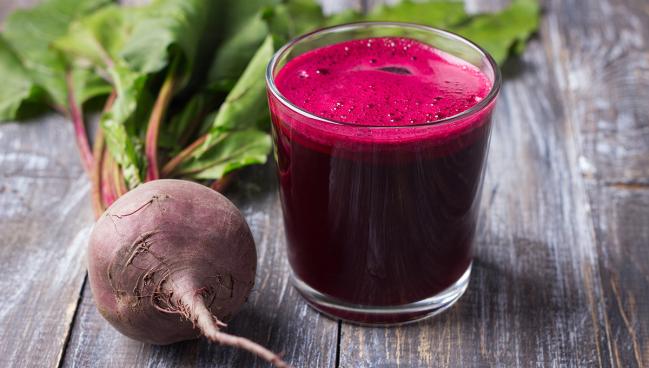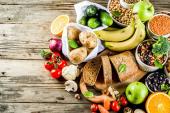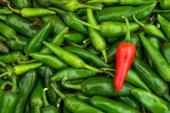‘Beeting’ In-stent Restenosis? Dietary Nitrate May Improve Outcomes
A daily dose of beet juice reduced late lumen loss at 6 months after PCI for stable angina, with a hint at lower MACE at 2 years.

WASHINGTON, DC—Daily consumption of inorganic nitrate in the form of beet juice seems to reduce late lumen loss following PCI, according to a small, randomized trial out of the UK.
Beets, like spinach and other leafy greens, are high in inorganic nitrate, which is converted to nitrite after consumption. That’s led some to speculate that beet juice might have cytoprotective, vasodilatory, anti-inflammatory, and even antithrombotic effects.
Krishnaraj Rathod, MBBS, PhD (St. Bartholomew’s Hospital, London, England), who presented the NITRATE-OCT findings here at CRT 2023, showed that over 6 months, those who drank a daily shot of beet juice had significantly less late lumen loss compared with those who received an altogether similar but nitrate-deplete placebo. There was also a trend toward fewer MACE at 2 years.
As such, beet juice may “have a therapeutic role in reducing in-stent restenosis following PCI for stable angina,” he concluded.
Commenting on the findings for TCTMD, David Kandzari, MD (Piedmont Heart Institute, Atlanta, GA), said he’s not about to suggest all of his post-PCI patients go out and buy a bottle of beet juice, but added, “I would certainly offer it up to someone who's had repetitive recurrent restenosis. . . . If there's no harm and there's a potential health benefit, why not?”
That said, Kandzari predicted he’d explain the limitations of the study and also warn patients that an increase in beet consumption could make for a harmless, but colorful, surprise in the toilet. “If you eat a lot of beets, your urine will turn red,” he noted.
Similarly, Tanveer Rab, MD (Emory University School of Medicine, Atlanta, GA), told TCTMD that while scientific proof is lacking that compounds like beet juice or other combinations of pomegranate, turmeric, and ginger concretely improve outcomes, he acknowledged that patients who incorporate these into their diet “do tend to do well.”
Beet Juice Outperforms Placebo
For the study, Rathod and colleagues randomized 300 patients (mean age 62 years; 87% male) who had undergone PCI for stable angina at their institution to ingest 70 mL of beet juice—equivalent to about five compressed beets—or the nitrate-deplete equivalent daily for 6 months. Baseline characteristics were similar between the groups, and roughly 22% of the total cohort was diabetic. The most common stent was Xience (Abbott), used in about two-thirds of participants.
At 6 months, both in-stent and in-segment mean late lumen loss (primary endpoints) as assessed by QCA were significantly lower in the dietary nitrate arm compared with those who received placebo.
Mean Late Lumen Loss at 6 Months
|
|
Placebo |
Nitrate |
P Value |
|
In-stent, mm |
0.244 |
0.117 |
0.0165 |
|
In-segment, mm |
0.269 |
0.055 |
0.0011 |
Additionally, nitrate resulted in a larger minimal lumen diameter at 6 months compared with placebo (P = 0.0154).
At 2 years, there was a trend toward lower MACE risk with dietary nitrate in the intention-to-treat analysis (P = 0.0718), but the study was not powered for this outcome, Rathod said.
More Study Needed
“As more and more nutraceuticals are becoming popular and the general public is more educated with regard to diet and dietary health, I think it's interesting that we're now exploring natural derivatives as an opportunity to maybe improve outcomes for patients,” Kandzari said, adding that the mechanism, for now, is entirely speculative.
“It's a lesson for us that there's always a balance to natural derivatives and nutraceuticals that may provide benefit versus basic science lab derivatives of pharmaceutical drugs and devices as well,” he said.
Further study, said Kandzari, would ideally include biomarker confirmation, for example, of a complementary reduction in inflammation, as well as identify any interaction between nutraceuticals and prescription drugs. But “doing studies like this, I think, is one other small step forward to try and help bridge the divide,” he agreed.
Discussing the study during CRT, Rasha Al-Lamee, MD, PhD (Imperial College London, England), pointed out that because dietary nitrate reduces blood pressure, as has been seen in prior research, it’s possible that the improvements seen in patients in this study were related to that or perhaps simply “better risk prevention.”
Rathod said that their data did show significant improvements in both systolic and diastolic blood pressures at 6 months, but whether that could contribute to a reduction in MACE would be “difficult to pinpoint” within that window.
Panelist Hector Garcia-Garcia, MD, PhD (MedStar Washington Hospital Center, Washington, DC), who also served as core lab director for the study, acknowledged that a major limitation of it was that roughly one-third of patients were lost to follow-up. “Of course, it’s encouraging to see that every signal . . . goes in the right direction,” he added. “These are promising data and further studies are needed.”
Andrew Sharp, MD (University Hospital of Wales, Cardiff), also a panelist, asked about the potential of using other foods to dose inorganic nitrate or potentially even fortifying other substances with the compound.
Rathod acknowledged that while many of the patients liked the taste of the juice, some likened it to “sweet mud.” Eating a “bowl of spinach” every day would also provide the equivalent amount of inorganic nitrate, but that’s not as practical, he said. “This is the closest we have, [as]compared to the natural product, that has the right amount of inorganic nitrate.”
Yael L. Maxwell is Senior Medical Journalist for TCTMD and Section Editor of TCTMD's Fellows Forum. She served as the inaugural…
Read Full BioSources
Rathod K. Investigation of effects of dietary nitrate on vascular function, platelet reactivity and restenosis in stable angina (NITRATE-OCT Study). Presented at: CRT 2023. February 25, 2023. Washington, DC.
Disclosures
- Rathod reports no relevant conflicts of interest.





Comments